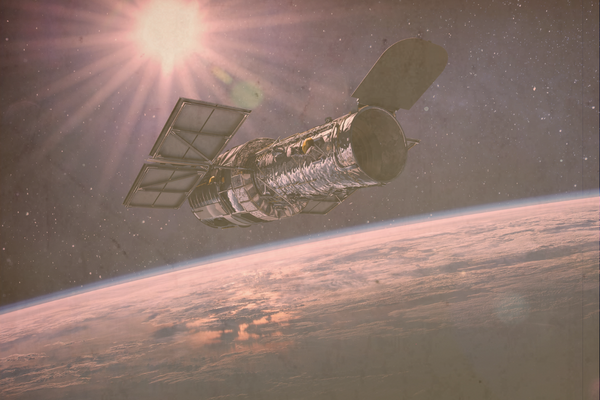“Apple Newton 2100” by moparx is licensed under CC BY-SA 2.0.
This week, we celebrate the 34th anniversary of the launch one of the crown jewels in the history of the America Space Program; the Hubble Space Telescope. Launched on April 24th, 1990, and still functioning to this day, the Hubble is responsible for many groundbreaking developments in the field of astrophysics, and the universe as we understand it today.
Distortion from Earth’s atmosphere limits the clarity of celestial observations through land based telescopes. In 1923, Hermann Oberth proposed sending a telescope into orbit, envisioning it above Earth’s atmosphere for clearer observations. After landing on the moon in 1969, NASA began to heavily focus on the project, and by 1974, plans were set for a versatile instrument capable of observations across various wavelengths.
Regular Maintenance Required
NASA’s development of the space shuttle concept for orbit, reusability, and return missions, allowed for the deployment and potential servicing of the Large Space Telescope. Expectations for the telescope were a 15-year lifespan requiring periodic instrument updates or servicing in orbit.
Delays due to underestimated costs and complex engineering pushed the Hubble Space Telescope’s launch from 1983 to 1986. Despite the Challenger disaster in 1986 delaying the launch, improvements were made to the telescope. On April 24, 1990, Hubble was launched aboard Discovery, marking a new era in space exploration by providing unprecedented views of the universe.
Designed for in-space servicing, the Hubble Space Telescope’s potential was initially hampered by a flawed primary mirror, leading to blurry images. However, the issue was rectified with corrective instruments installed during the first servicing mission. Subsequent servicing missions further enhanced Hubble’s capabilities, enabling it to capture the stunning cosmic imagery we now celebrate, showcasing the telescope’s resilience and the value of its upgradable design.
The Wrap
Exceeding its initial 15-year mission, the Hubble Space Telescope has been operational for over 30 years, making significant contributions to astronomy. It has facilitated over 1.5 million observations, leading to more than 20,000 scientific papers. Despite facing the challenges of aging machinery, innovative engineering solutions have prolonged its functionality, allowing Hubble to continue its exploration of the universe and significantly impact our understanding of cosmic phenomena.






